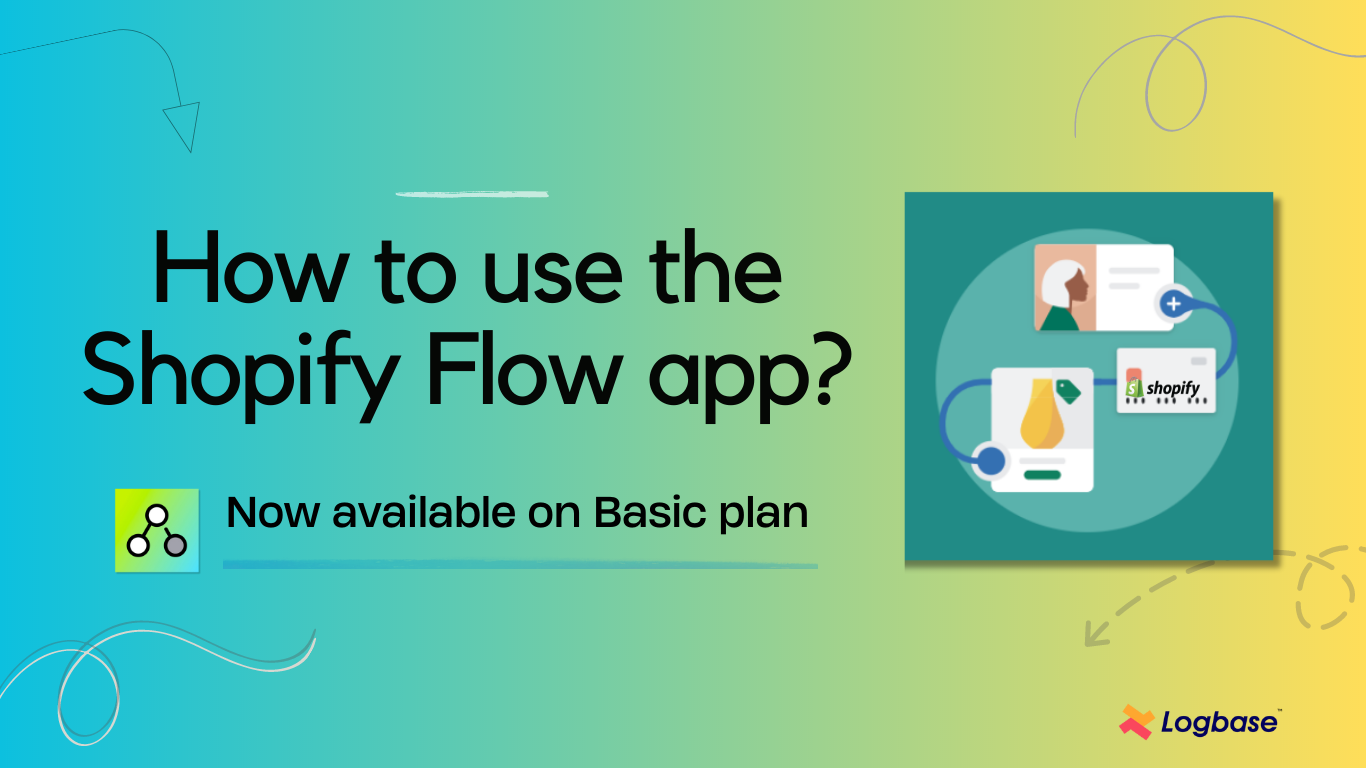How To Create and Manage Multiple Shopify Stores
Last updated on
April 24, 2024
.png)
Want to expand your ecommerce business? Well, you are in the right direction. Creating separate stores for your products on Shopify might be the perfect solution for you. However, while doing so, questions may arise like "Can you have multiple Shopify stores on one account?" or "How do you manage multiple Shopify stores efficiently?".
In this article, we'll provide an in-depth guide on creating and managing multiple Shopify stores. From understanding Shopify's multi-store feature to exploring different ways to manage, grow your stores, we'll cover everything you need to know to make the most out of your Shopify stores. So, grab a cup of coffee, and let's get started!
Can You Have Multiple Shopify Stores on One Account?
Yes, you can have multiple Shopify stores on one account. Shopify allows you to create up to 10 stores on a single account, each with its domain name, products, settings and everything else.
Creating multiple stores is quite helpful for entrepreneurs and businesses that sell different products targeting different target audiences. Also, with multiple stores, you can easily segment your product lines, test different marketing strategies, and track performance separately for each store. This makes managing these Shopify stores quite an easy task to do.
However, it’s important to note that each additional store will come with its monthly subscription fee. This means that if you have multiple stores, you'll need to pay a separate fee for each. Furthermore, these subscription fees depend upon the plan you deem fit according to your store requirements. The most basic plan among these starts at $29 per month known as Basic Shopify plan.
Creating Multiple Shopify Stores: Instructions
Managing Multiple Shopify Stores
Managing multiple Shopify stores is a great way to expand your business while catering to different target audiences for your products. Shopify's multi-store feature makes it easy for you to do. With this feature, you can easily create up to 10 stores on a single account, each with its domain name, products, settings, and design.
What Exactly is Shopify’s Multi-store Feature?
Shopify's multi-store feature allows you to create multiple online stores under one account. This means you can manage several stores, each with unique branding, products, and settings, all from just a single dashboard.
With Shopify's multi-store feature, you can easily switch between your stores, customise and manage them. This is quite useful when you have different products to deal with or want to serve different regions or languages for your targeted audience. It allows you to track different sales performance for each store, manage your product lines, and test different marketing strategies under one roof.
For example, let's say you have a clothing store that sells women's apparel and a separate store that sells men's. With Shopify's multi-store feature, you can create two separate storefronts, each with unique branding and product selection. This allows you to cater to both your male and female customers in a more targeted way.
How Does Multi-Store Management Work on Shopify?
Well, it's pretty simple! When you log in to your Shopify account, you'll see a dropdown menu letting you switch between your stores. From there, you can easily manage each of your Shopify stores separately, without having to log in and out of different accounts.
Managing multiple stores on Shopify also allows you to:
- Segment your product lines: If you sell different types of products or cater to different audiences, you can create separate stores for each product line or audience. For example, if you offer POD services and pre-made clothing, it would be best to separate these offerings into two websites. This makes it easier to target your marketing efforts and track sales performance for each store
- Test different marketing strategies: With multiple stores, you can experiment with different marketing tactics, such as pricing, promotions, and messaging, and see which resonate best with your customers.
- Customize your stores: Each store can have its own unique design, product categories, and branding, so you can tailor the user experience to each target audience.
It's important to note that managing multiple stores on Shopify does come with additional costs, as each store will require its own subscription fee. However, if you want to grow your business and expand your reach, the benefits of multi-store management can outweigh the costs.
Should You Have a Different Email for Each Shopify Store?
While creating multiple Shopify stores for your products, you may want to know whether having a different email for each Shopify store is a good idea. Well, the answer is yes it is a good idea. When it comes to using separate email accounts for each Shopify store, there are many benefits to it.
Some of these benefits are as follows:
1. Improved Organization: When you have multiple email accounts for your Shopify business, you can separate different types of communication into different inboxes. For example, you could have one email account for customer inquiries, another for order notifications, and a third for marketing emails. This allows you to keep everything organized and easily find the information you need without having to sift through a cluttered inbox.
2. Better Customer Support: With separate email accounts for customer inquiries, you can prioritize and respond to customer emails more efficiently. You can also assign different team members to specific email accounts, ensuring that each customer inquiry is handled by the right person. This can lead to faster response times and better customer satisfaction.
3. Increased Professionalism: Using multiple email accounts can also give your Shopify business a more professional appearance. By having specific email accounts for different types of communication, you can create a more polished and organized image for your brand. This can help to build trust with your customers and increase their confidence in your business.
Furthermore, by using a single email app to manage all of your email accounts, you can also enjoy additional benefits such as:
- Convenience: Rather than switching between different email apps to check each email account, you can access all of your inboxes in one place. This can save you time and make it easier to stay on top of your communication.
- Integration: A single email app can often integrate with other tools and software that you use for your Shopify business. For example, you may be able to automatically send order notifications to specific email accounts or use a tool like Zapier to automate certain tasks based on your email activity.
Overall, using multiple email accounts and a single email app can simplify your Shopify business and help you to communicate more effectively with your customers.
Wrapping Up
In conclusion, using multiple email accounts can greatly simplify your Shopify business and streamline your communication with customers. Furthermore, by organizing your emails into separate inboxes for customer inquiries, order notifications, and more, you can easily save time and stay on top of everything.
However, while a single email can be convenient and cost-effective, it also comes with risks like security vulnerabilities and limited customization options. Ultimately, the best approach will depend on your individual business needs and priorities.
By taking the time to set up and manage your email accounts effectively, you can help your Shopify business run more smoothly and efficiently.
Additionally,integrating a robust VPN (Virtual Private Network)into your email setup can enhance security and privacy, especially when accessing sensitive information or communicating over public networks.
Frequently Asked Questions (FAQs)
How much does it cost to have two Shopify stores?
It depends upon the pricing plan you choose for each of these stores. Shopify offers a wide range of pricing plans for their customers, usually starting from the basic Shopify plan priced at $29/month.
Each pricing plan has different features and limits on staff accounts, transaction fees, and sales channels. If you want to have two Shopify stores, you'll need to pay for each store separately, and each store will need to have its pricing plan.
So if you choose the basic Shopify plan for both stores, you'll pay $29/month for each store, or $58/month. If you choose the advanced Shopify plan for both stores, you'll pay $299/month for each store, or a total of $598/month.
It's also worth noting that additional costs may be associated with running an online store, such as transaction fees for credit card processing, third-party apps and plugins. These costs will vary depending on your specific needs and your choices when setting up your stores.
How many stores can you have on Shopify's basic plan?
Only one. When it comes to the basic Shopify plan, Shopify only allows you to create one Shopify store to work with. However, if you want to create multiple Shopify stores, then you should go for the Shopify plus membership plan.
The Shopify plus membership plan allows you to create 9 expansion stores along with one main Shopify store thus making 10 stores in total. Moreover, you also get to create more stores at an extra fee of $250 USD per month for each extra store you make.
The number of stores you can make an extra fee for each of them is unlimited. So as long as you are willing to pay more, there is not exactly any limit on how many shopify stores you can make.
How many pages can a Shopify store have?
As a Shopify store owner, you may wonder how many pages your store can have. The good news is that there is no fixed limit to the number of pages you can create on your Shopify store.
You can literally have hundreds or even thousands of pages depending upon your store’s requirements. However, it's important to keep in mind that having too many pages can negatively impact your store's performance, user experience, and search engine optimization (SEO).
Some common pages that most Shopify stores use include Home page, product pages, collection pages, About Us page, Contact Us page and a FAQ page.
How much do successful Shopify stores make?
According to a Shopify report, the average revenue generated by a Shopify store is $72,000 per year. However, this number can vary significantly depending on the industry, size, and location of the store. Some Shopify stores may generate much more than this amount, while others may generate less.
One factor that influences the earning potential of a Shopify store is the industry it operates in. For example, fashion and beauty stores tend to generate higher revenue than stores selling electronics or office supplies.
Also, stores that specialise in niche products may be able to charge higher prices and generate more revenue. Another factor is the size of the store. A small store with only a few products may generate less revenue than a larger store with a wider range of products.
Also, the location of the store and its target market can influence revenue. Stores that target a global audience may have higher revenue potential than those targeting a local market.
.svg)




.svg)
.svg)
.svg)
.png)

.svg)